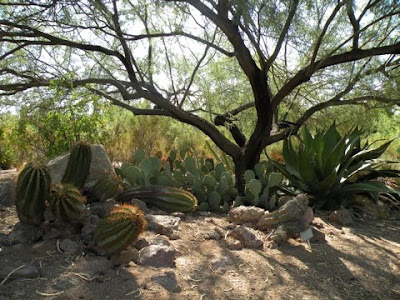
A friend Marcia, who is a volunteer at the Wildflower Center, sent me this little story this week. Sometimes I wish I had some grass and leaves to add to my compost pile. In the fall we pick up those bags of leaves in the neighborhood so they don't go to waste.
(overheard in a conversation between God and St. Francis):
God: Francis, you know all about gardens and nature; what in the world is going on down there in the U.S.? What happened to the dandelions, violets, thistles and the stuff I started eons ago?I had a perfect no-maintenance garden plan. Those plants grow in any type of soil, withstand drought, and multiply with abandon. The nectar from the long-lasting blossoms attracts butterflies, honeybees, and flocks of songbirds. I expected to see a vast garden of color by now. All I see are patches of green.
St. Francis: It's the tribes that settled there, Lord. They are called the Suburbanites. They started calling your flowers 'weeds' and went to great lengths to kill them and replace them with grass.
God: Grass? But it is so boring, it's not colorful. It doesn't attract butterflies, bees or birds, only grubs and sod worms. It's temperamental with temperatures. Do these Suburbanites really want grass growing there?
St. Francis: Apparently not, Lord. As soon as it has grown a little, they cut it....sometimes two times a week.
God: They cut it? Do they bale it like hay?
St. Francis: Not exactly, Lord. Most of them rake it up and put it in bags.
God: They bag it? Why? Is it a cash crop? Do they sell it?
St. Francis: No sir, just the opposite. They pay to throw it away.
God: Now let me get this straight...they fertilize it to make it grow and when it does grow, they cut it off and pay to throw it away?
St. Francis: Yes, sir.
God: These Suburbanites must be relieved in the summer when we cut back on the rain and turn up the heat. That surely slows the growth and saves them a lot of work.
St. Francis: You aren't going to believe this Lord, but when the grass stops growing so fast, they drag out hoses and pay more money to water it so they can continue to mow it and pay to get rid of it.
God: What nonsense! At least they kept some of the trees.
That was a sheer stroke of genius, if I do say so myself.
The trees grow leaves in the spring to provide beauty and shade in the summer. In the autumn they fall to the ground and form a natural blanket to keep the moisture in the soil and protect the trees and bushes. Plus, as they rot, the leaves become compost to enhance the soil. It's a natural circle of life.
St. Francis: You'd better sit down, Lord. As soon as the leaves fall, the Suburbanites rake them into great piles and pay to have them hauled away.
God: No way! What do they do to protect the shrubs and tree roots in the winter to keep the soil moist and loose?
St Francis: After throwing the leaves away, they go out and buy something called mulch. They haul it home and spread it around in place of the leaves.
God: And where do they get this mulch?
St. Francis: They cut down the trees and grind them up to make mulch.
God: Enough! I don't want to think about this anymore.
Saint Catherine, you're in charge of the arts. What movie have you scheduled for us tonight?
St. Catherine: 'Dumb and Dumber,' Lord. It's a really stupid movie about...
God: Never mind -I think I just heard the whole story from Saint Francis!

 I can assure you that my Great, great grandfather is turning in his grave at the thought of reynard happily snoozing away in the garden of his great great granddaughter. After all it was his job to hunt the fox. He was huntsman to the Badsworth Hunt in the early 1800s. Hunting was the cause of his untimely death at the age of 40.
I can assure you that my Great, great grandfather is turning in his grave at the thought of reynard happily snoozing away in the garden of his great great granddaughter. After all it was his job to hunt the fox. He was huntsman to the Badsworth Hunt in the early 1800s. Hunting was the cause of his untimely death at the age of 40.









































